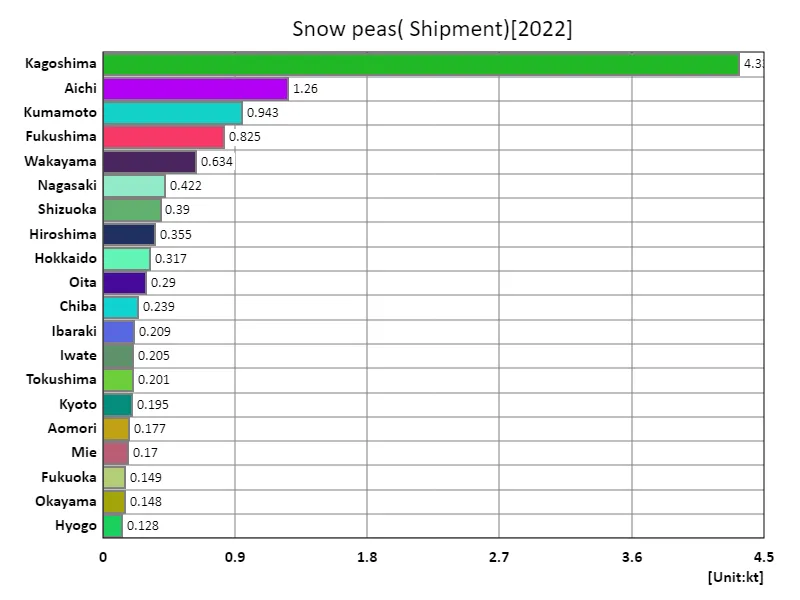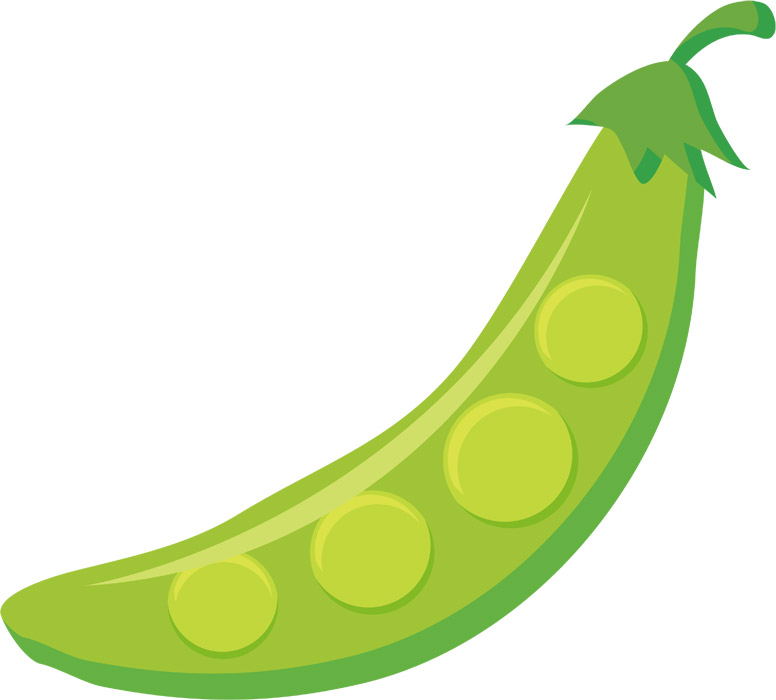Abstract
Looking at data on fruit vegetables in Japanese agriculture, especially snow peas, we can see that the harvest volume in 2022 was up to 19.3kt nationwide, the cultivated area was up to 2.65kha, and the shipping volume was up to 4.33kt in Kagoshima. These figures suggest that snow pea production in Japan is widespread throughout the country, with Kagoshima being a particularly important region in terms of shipping volumes. Furthermore, the relationship between production volume and cultivated area suggests that production is being carried out relatively efficiently. Snow peas hold an important place in Japanese food culture, and we can see that they are in high demand. These data suggest that snow peas are an important crop in Japanese agriculture, with a tight balance between demand and production.
Snow pea yield (main data).
Looking at snow pea yield data from 1973 to 2022, the national yield hit a record peak in 1979 at 73.6kt. The yield has since fluctuated and has now settled at 26.2% of its peak level. Possible characteristics of this period include changes in demand and the impact of agricultural policies. Climate conditions and advances in agricultural technology may also have played a role. Snow peas are generally in high demand and some steady production has been maintained, but the decline from peak years may be due to changes in demand or markets. In the future, sustainable production methods and production adjustments in line with demand trends will be important.


The maximum is 73.6kt[1979] of Japan, and the current value is about 26.2%
Snow pea harvest volume (by prefecture).
Looking at the fruit and vegetable harvest data for Japan in 2022, the overall highest was 4.98kt in Kagoshima, which is the current maximum value. Considering the characteristics and trends so far, it is suggested that Kagoshima is an important region for fruit and vegetable production. Kagoshima’s climatic conditions, land use, and advances in agricultural technology may all contribute to the region’s high yields. In addition, other prefectures also produce fruit vegetables based on their own characteristics, but the fact that Kagoshima is the largest suggests that the region has an advantage and competitiveness. Changes in demand and agricultural policy influences may also be affecting yields in different regions. In the future, there will be a need for sustainable production methods that take advantage of the characteristics of each region and strategies to respond to changes in demand.


The maximum is 4.98kt of Kagoshima, the average is 410t, and the total is 19.3kt
Area planted with snow peas (main data).
Looking at the data on snow pea acreage from 1973 to 2022, the crop reached a record peak of 12.1kha in 1973 across the country. The area under cultivation has since fluctuated and has now settled at 21.9% of its peak level. Possible characteristics of this period include changes in demand and the impact of agricultural policies. Competition from other crops, economic conditions and changes in land use may also have played a role. While demand for snow peas is high, their cultivation is time-consuming and labor-intensive, so the area planted there tends to fluctuate depending on farmers’ wishes and changes in market demand. The current figure of 21.9% is down from the peak, but this may be due to changes in demand and competition from other crops. Going forward, we may see fluctuations in acreage due to changes in demand and the promotion of sustainable agriculture.


The maximum is 12.1kha[1973] of Japan, and the current value is about 21.9%
Snow pea cultivation area (by prefecture).
Looking at the data on the area of fruit and vegetable cultivation in Japan for 2022, the largest overall is Kagoshima at 426 hectares, which is the current maximum value. Considering the characteristics and trends thus far, it is suggested that Kagoshima is a particularly important region for fruit vegetable cultivation. Kagoshima’s climatic conditions, land use, and advances in agricultural technology may have contributed to the large-scale cultivation of fruit and vegetables in the region. In addition, other prefectures also cultivate fruit vegetables based on their own characteristics, but the fact that Kagoshima is the largest suggests that the region has an advantage and competitiveness. Changes in demand and agricultural policy influences may also affect the acreage in each region. In the future, sustainable cultivation methods that take advantage of the characteristics of each region and strategies to respond to changes in demand will be required.


The maximum is 426ha of Kagoshima, the average is 56.3ha, and the total is 2.65kha
Shipment volume of snow peas.
Looking at the shipping volume data for snow peas in Japan in 2022, the largest overall was Kagoshima at 4.33kt, the average was 278t, and the total was 13.1kt. Considering the characteristics and trends so far, it is clear that Kagoshima is a major producer of snow peas. Kagoshima’s climatic conditions and advances in agricultural technology may be contributing to the high shipping volumes in this region. Also, while there is demand for snow peas nationwide, there is some fluctuation in production volume. Changes in demand, weather conditions and agricultural policy influences can affect fluctuations in shipments. The average shipping volume of 278 tons indicates that there is generally a steady and consistent production. Going forward, we will need to work to maintain a stable supply as demand changes and sustainable production methods are introduced.


The maximum is 4.33kt of Kagoshima, the average is 278t, and the total is 13.1kt



Comments